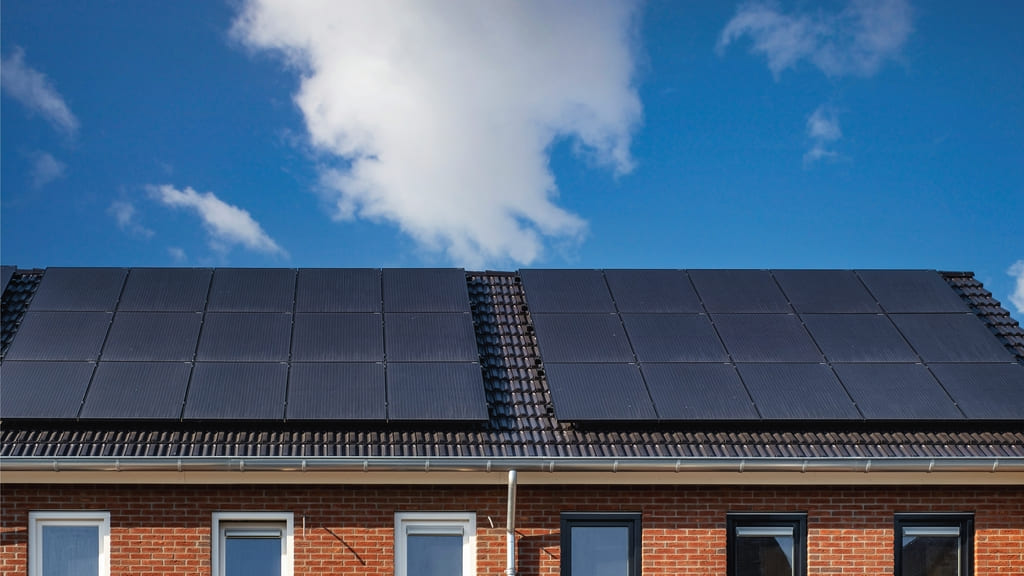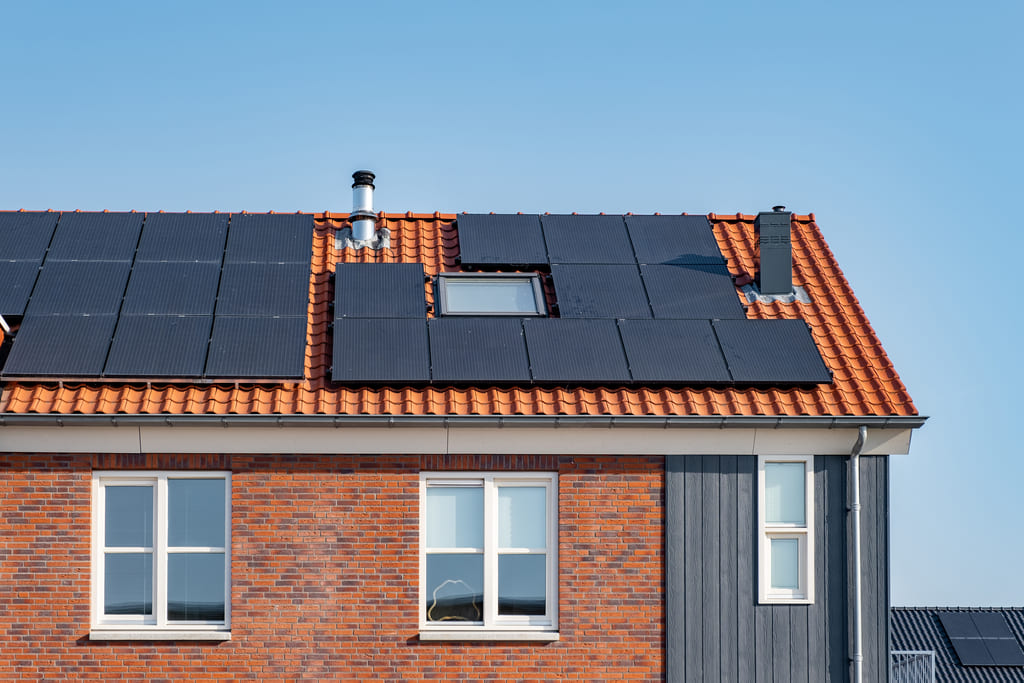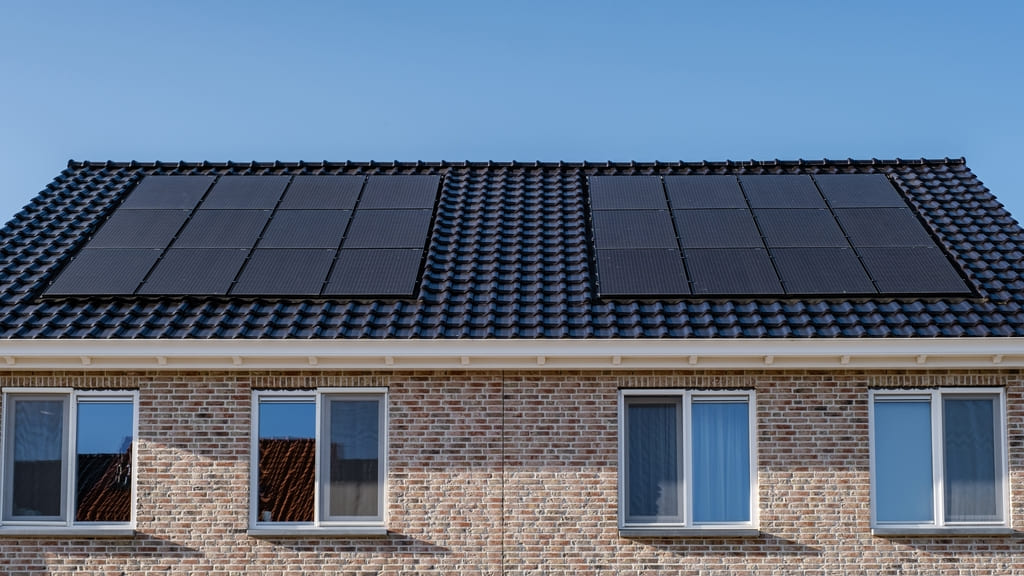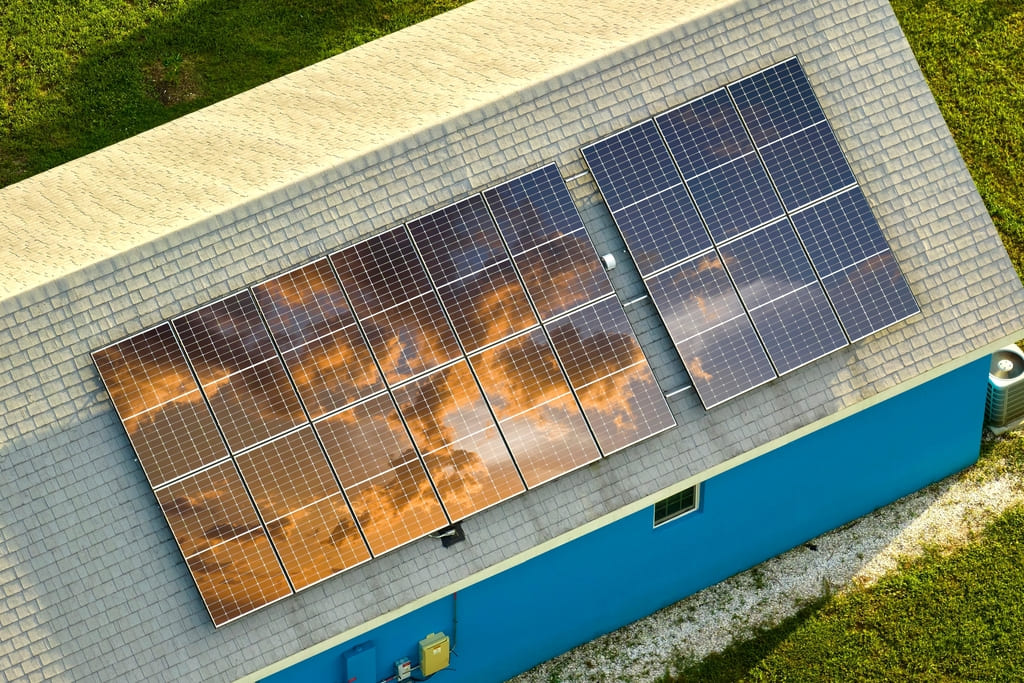Curious about rooftop solar? From cost savings to environmental benefits, there are plenty of reasons to consider making the switch to solar energy. But what challenges might you face along the way, and what are the different types of rooftop solar to choose from?
Stay up to date on the latest trends in rooftop solar, including community solar and solar storage. The future of rooftop solar is bright – find out what’s in store for this renewable energy source.
Key Takeaways:
- Rooftop solar provides a variety of benefits, including cost savings, energy independence, and environmental benefits.
- While there are challenges to rooftop solar, such as upfront costs and limited space, advancements in technology and alternative options are helping to address these issues.
- Current trends show a shift towards community solar, solar storage, and virtual net metering, indicating a promising future for rooftop solar.
What Are the Benefits of Rooftop Solar?
Rooftop solar offers numerous benefits to homeowners in California, from substantial cost savings on electricity bills to enhanced energy independence and positive environmental impacts. Installing a rooftop solar system can significantly increase the overall property value of a home.
Incorporating rooftop solar panels is like making a smart investment that pays off in more ways than one. Not only do homeowners save money on their utility bills, but they also reduce their reliance on conventional energy sources, leading to a more sustainable lifestyle.
The positive environmental impact of rooftop solar cannot be overstated. By utilizing the strength of the sun, homeowners contribute to a cleaner, greener future for their communities. This shift towards renewable energy sources is crucial in combating climate change and preserving the planet for future generations.
Cost Savings
One of the primary advantages of rooftop solar is the substantial cost savings it offers to homeowners in California. By generating their electricity through solar panels, homeowners can reduce their reliance on the grid and lower their electricity bills significantly.
Plus immediate cost savings on electricity bills, rooftop solar installations also provide a long-term financial benefit for homeowners. With the increasing costs of traditional electricity sources, harnessing solar energy can act as a shield against rising electricity rates in the future.
The state of California offers various financial incentives and rebate programs to promote solar adoption. These incentives, such as the California Solar Initiative and net metering, not only reduce the upfront costs of installing solar panels but also allow homeowners to earn credits for excess energy produced.
Energy Independence
Rooftop solar systems provide homeowners with a sense of energy independence by allowing them to generate their electricity on-site. This reduces reliance on the traditional grid and enhances resilience, especially when paired with battery storage solutions.
Energy independence is increasingly becoming a focal point in the conversation around sustainable living. With rooftop solar installations, households not only have the ability to harness clean renewable energy but also to break free from the constraints of centralized electricity production. By producing electricity right where it is consumed, individuals can mitigate the effects of power outages, fluctuations in grid supply, and escalating energy costs. The integration of battery storage further fortifies this independence by enabling homeowners to store excess energy for use during periods of high demand or little sunlight.
Environmental Benefits
The adoption of rooftop solar contributes significantly to environmental sustainability in California, reducing carbon emissions and supporting the growth of the solar industry. By harnessing clean, renewable energy from the sun, homeowners play a vital role in combating climate change.
Utilizing solar panels on rooftops allows for the generation of clean energy without releasing harmful greenhouse gases into the atmosphere. This not only aids in lowering carbon footprints but also lessens the dependence on non-renewable energy sources. The positive impact of rooftop solar installations extends to the local community and ecosystem by promoting cleaner air quality and reducing the strain on natural resources. The growing demand for solar power in California is driving innovation and job creation within the sustainable energy sector.
Increased Property Value
Installing a rooftop solar system can lead to a significant increase in the property value of residential homes in California. Homeowners investing in solar installations not only benefit from reduced energy costs but also enjoy a higher resale value due to the added appeal of sustainable energy solutions.
Studies have shown that properties with solar panels tend to fetch higher prices in the real estate market due to their energy efficiency and eco-friendly features. Potential buyers are increasingly drawn to homes with existing solar systems, as they recognize the long-term savings and environmental benefits associated with renewable energy sources. This positive correlation between solar technology and property values underscores the growing demand for sustainable living among homeowners, positioning solar-equipped homes as desirable investments in today’s market.
What Are the Challenges of Rooftop Solar?
Despite its many benefits, rooftop solar also presents several challenges that homeowners in California need to consider. These challenges include high upfront costs, limited space for installation, and ongoing maintenance and repair requirements.
The high upfront costs associated with installing a rooftop solar system can be a major hurdle for homeowners, especially in California where the initial investment may seem prohibitive. Limited space on rooftops can also pose a limitation, as not all homes have the ideal setup or orientation for solar panels. The need for regular maintenance and potential repairs adds another layer of complexity and ongoing expenses for homeowners.
Upfront Costs
One of the primary challenges of adopting rooftop solar is the high upfront costs associated with purchasing and installing solar panels. Many homeowners face financial barriers when considering solar, requiring them to explore financing options or incentives offered by solar companies.
Financial challenges tied to the substantial initial investment for rooftop solar setups have been a significant deterrent for individuals looking to transition to renewable energy sources. These costs encompass not only the price of the solar panels themselves but also the expenses related to installation, permits, and other components. Homeowners who wish to go solar often find themselves in a quandary, unsure of how to proceed due to the daunting upfront financial requirements.
Limited Space
Another challenge for rooftop solar installations is the limited space available for mounting solar panels, especially in densely populated areas. Homeowners must carefully plan the placement of solar systems to maximize energy generation within the constraints of their property.
One effective strategy for homeowners facing space limitations is to use tilt racks that allow panels to be angled for optimal sun exposure. By incorporating these adjustable racks, solar panels can be positioned in a way that minimizes shade from nearby buildings or trees, enhancing overall efficiency.
The orientation of the roof plays a crucial role in maximizing solar energy production. South-facing roofs typically receive the most sunlight throughout the day, making them ideal for solar panel installations. When space is a concern, prioritizing these areas can significantly boost the system’s performance.
Maintenance and Repairs
Maintaining and repairing rooftop solar systems is an essential aspect of ownership that homeowners need to consider. Companies specializing in solar maintenance offer services to ensure the optimal performance and longevity of residential solar installations.
Regular maintenance of rooftop solar systems involves various tasks such as cleaning panels, inspecting for any damages or malfunctions, and ensuring proper wiring connections. These maintenance routines are crucial to prevent any efficiency loss or costly repairs in the long run. By engaging with specialized companies that have expertise in solar maintenance, homeowners can enjoy peace of mind knowing that their solar system is well taken care of. These professionals are equipped with the knowledge and tools to address any issues promptly and help in maximizing the energy production of the solar panels.
What Are the Different Types of Rooftop Solar?
Rooftop solar technology offers various options for homeowners looking to harness solar energy. The primary types of rooftop solar systems include traditional solar panels, innovative solar tiles, and sleek solar shingles, each designed to meet different aesthetic and functional preferences.
Traditional solar panels are the most common and cost-effective option, typically mounted on racks atop the roof. On the other hand, solar tiles integrate seamlessly with the existing roof material, providing a more streamlined aesthetic. For those seeking a blend of style and sustainability, solar shingles offer a discreet way to generate renewable energy while enhancing the overall look of the home.
Solar Panels
Solar panels are the most common type of rooftop solar system installed by homeowners in California. These panels capture sunlight and convert it into electricity, providing a reliable and efficient energy solution for residential properties.
By utilizing the strength of the sun, solar panels generate clean and renewable energy to power homes, reducing dependency on grid electricity and lowering utility bills. The process of how these panels work involves photovoltaic cells that absorb sunlight and create an electric current. During installation, solar panels are typically mounted on rooftops to maximize sun exposure, and their modular design allows for scalability based on energy needs. Homeowners benefit from reduced carbon footprint, increased property value, and potential incentives or rebates for adopting sustainable energy practices.
Solar Tiles
Solar tiles represent an innovative approach to rooftop solar, seamlessly integrating solar technology into the roof structure. These aesthetically pleasing tiles serve a dual purpose of providing solar energy generation while enhancing the visual appeal of residential properties.
By cleverly blending functionality with design, solar tiles are a futuristic solution that seamlessly harmonizes renewable energy sources with architectural elements. The integration of solar technology with roofing materials transforms an ordinary roof into a sustainable powerhouse, capable of harnessing sunlight and converting it into clean electricity for household use. The installation process of these cutting-edge tiles involves expert craftsmanship to ensure a seamless and efficient setup that maximizes solar energy production.
Solar Shingles
Solar shingles offer homeowners a sleek and streamlined solar solution that mimics the appearance of traditional roofing materials. These durable and efficient shingles provide a discreet way to generate solar energy while blending seamlessly with the overall roof design.
The aesthetic advantages of solar shingles lie in their ability to enhance the visual appeal of a home without the need for traditional solar panels. These shingles are designed to integrate seamlessly into the roof, maintaining the elegance of the property while utilizing the strength of the sun. The installation process of solar shingles is relatively straightforward, involving the placement and wiring of the shingles by professionals trained in handling these specific roofing components.
What Are the Current Trends in Rooftop Solar?
The landscape of rooftop solar is constantly evolving, with emerging trends that cater to the changing needs of homeowners and the energy industry in California. Current trends include the rise of community solar programs, the integration of solar storage solutions, and the adoption of virtual net metering practices.
These trends are reshaping the way solar power is generated, consumed, and shared among Californian communities.
- Community solar initiatives enable individuals who cannot install panels on their roofs to benefit from renewable energy sources collectively.
- Advancements in solar storage technology have revolutionized how solar energy can be stored during peak production times for later use.
- This storage capability enhances energy independence and resilience against power outages, making solar energy even more attractive to homeowners.
Community Solar
Community solar initiatives are gaining popularity in California, allowing residents to collectively invest in shared solar projects. These programs provide access to solar energy benefits for individuals who may face barriers to installing rooftop systems on their properties.
By pooling resources and sharing the output from a centrally located solar array, community solar programs offer a viable option for those unable to afford or install solar panels on their own roofs. These initiatives help lower-income households and renters access clean energy, which was previously out of reach for them.
The growth of community solar in California has been supported by partnerships between local governments, utilities, and solar associations, working together to streamline regulations and incentivize participation. As a result, various regions across the state are witnessing a surge in the development of shared solar projects, contributing to the overall expansion of renewable energy sources in California.
Solar Storage
Solar storage solutions are revolutionizing rooftop solar capabilities by enabling homeowners to store excess energy for later use. Batteries integrated with solar systems provide backup power during outages and increase self-consumption of solar-generated electricity.
The advancements in solar storage technology have significantly improved the efficiency and reliability of rooftop solar setups. With the ability to capture and store surplus energy, households can now reduce their reliance on the grid and rely more on clean, renewable power sources. This shift towards increased energy independence not only reduces electricity bills but also contributes to a more sustainable future.
Virtual Net Metering
Virtual net metering policies have facilitated the growth of rooftop solar by allowing multiple customers to share the benefits of a single solar system. These policy changes promote solar adoption and expand access to clean energy solutions across diverse customer groups.
By enabling individuals to access solar energy without the need for rooftop panels, virtual net metering has democratized the solar landscape. These policies encourage community participation, fostering collaboration among neighbors in harnessing solar power for mutual environmental and cost-saving benefits. This inclusive approach not only lowers barriers to entry for underserved populations but also drives collective action towards sustainable energy practices. As a result, the shift towards solar sharing models has been instrumental in encouraging widespread adoption of renewable energy technologies, transforming the energy sector towards a more sustainable future.
What Is the Future of Rooftop Solar?
The future of rooftop solar in California holds promise for continued growth and innovation within the solar industry. Advancements in technology, policy changes, and evolving consumer preferences are shaping a future where rooftop solar plays a vital role in the state’s energy landscape.
With the state’s ambitious renewable energy goals and commitments to reduce carbon emissions, the demand for rooftop solar installations is expected to surge. This anticipated growth is further fueled by the declining costs of solar panels and installation, making solar energy more accessible to a broader range of consumers. Technological advancements like smart inverters, energy storage solutions, and monitoring systems are also enhancing the efficiency and effectiveness of rooftop solar systems, increasing their appeal and value.
Frequently Asked Questions
What’s Next for Rooftop Solar?
1. What are the latest advancements in rooftop solar technology?
Some of the latest advancements in rooftop solar technology include the development of more efficient solar panels, the use of battery storage systems, and the integration of artificial intelligence for better energy management.
2. Can I still benefit from rooftop solar if I live in an area with frequent cloudy or rainy days?
Yes, you can still benefit from rooftop solar even in areas with less sunlight. Solar panels are designed to capture both direct and indirect sunlight, so they can still produce electricity on cloudy or rainy days.
3. Are there any new government incentives or policies that will impact rooftop solar?
Yes, there are several new government incentives and policies being implemented to further promote the use of rooftop solar. These include tax credits, net metering programs, and community solar initiatives.
4. What improvements are being made to make rooftop solar systems more affordable?
Many improvements have been made to make rooftop solar systems more affordable, such as the decreasing cost of solar panels, the availability of financing options, and the introduction of leasing programs.
5. Will there be any changes to the way rooftop solar systems are installed in the future?
Yes, there is a shift towards more streamlined and standardized installation processes, as well as the use of technology such as drones and 3D modeling to improve efficiency and accuracy.
6. How can I ensure that my rooftop solar system is maintained and functioning properly in the long run?
Regular maintenance and inspections by a certified solar technician are important in ensuring that your rooftop solar system is functioning at its best. Some solar companies also offer monitoring services to track the performance of your system.



